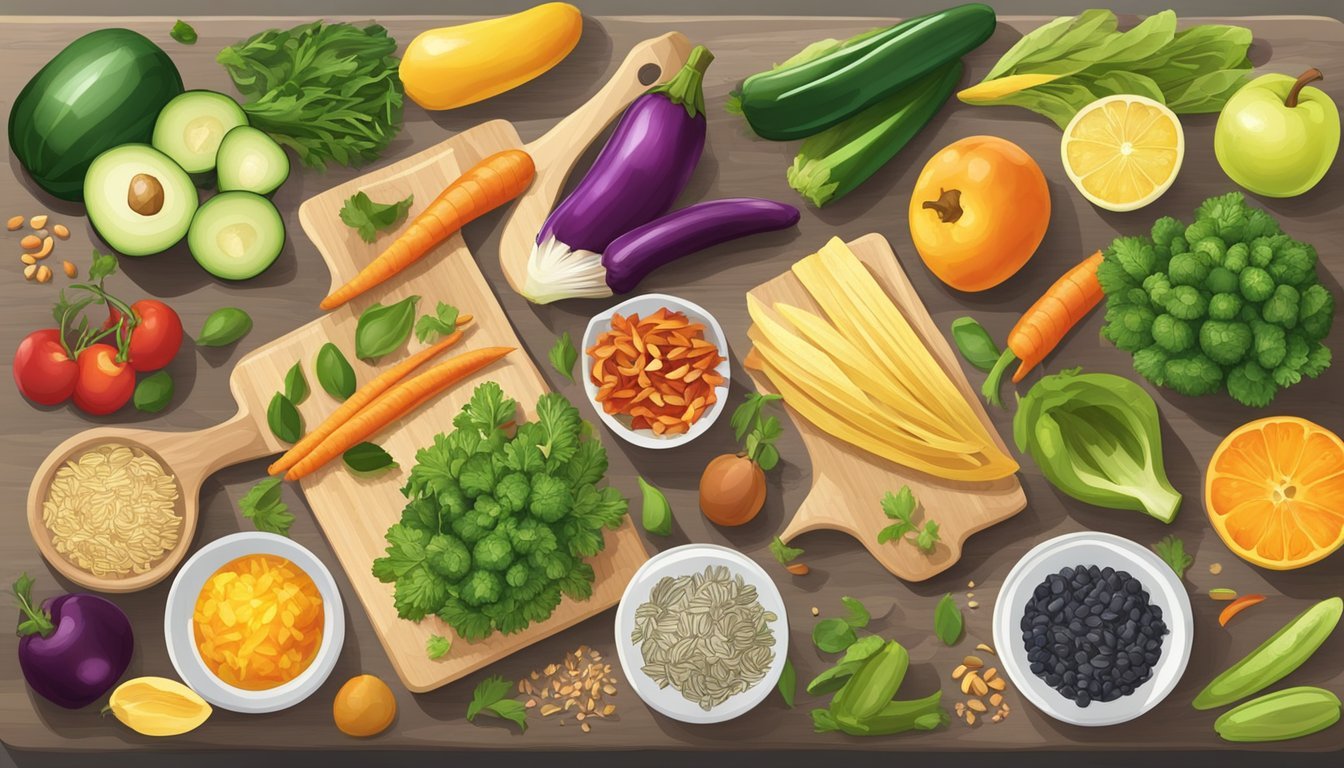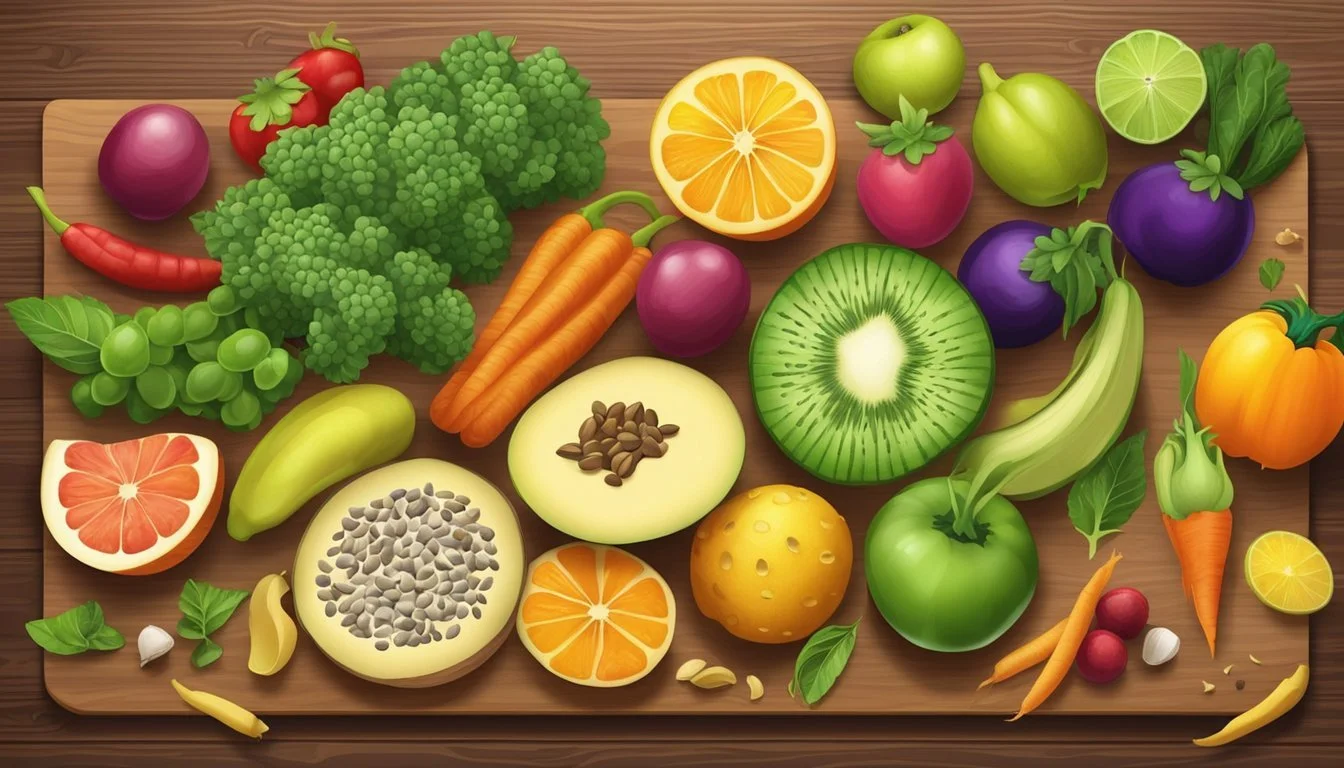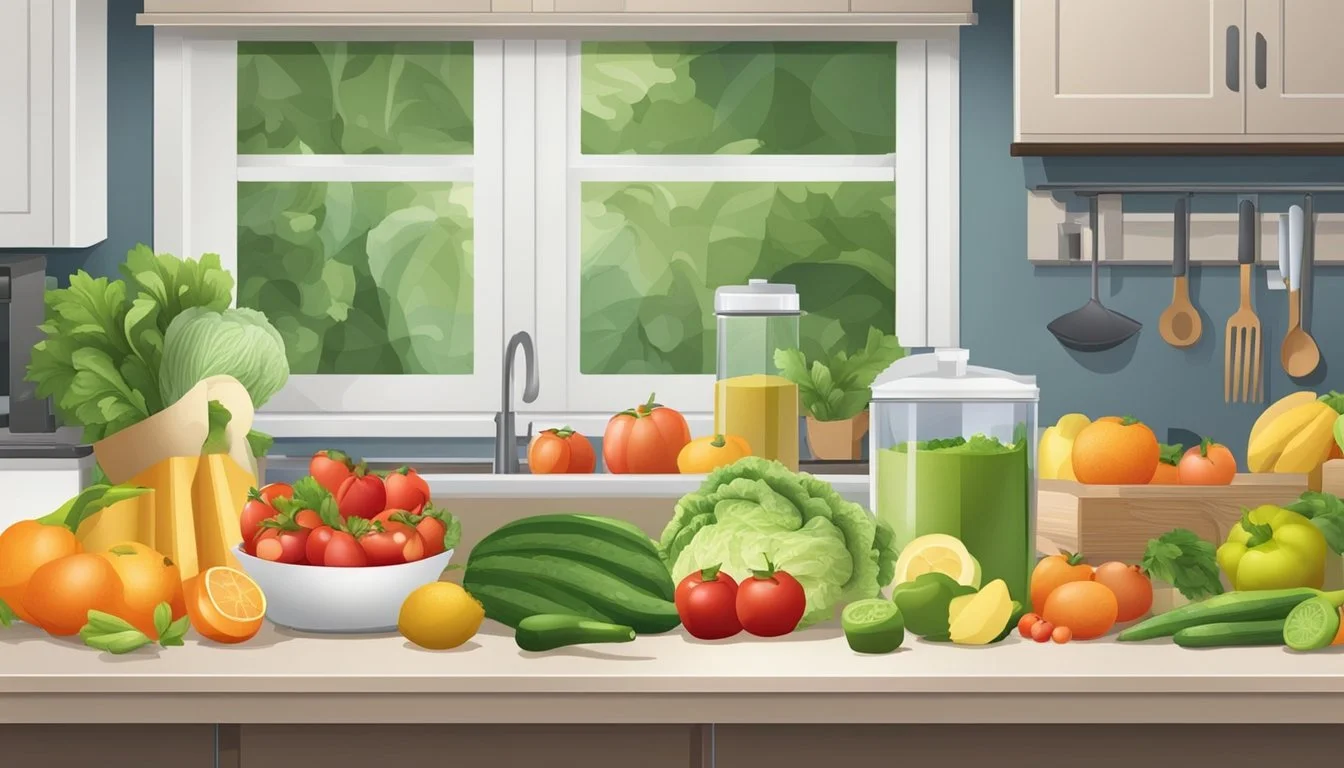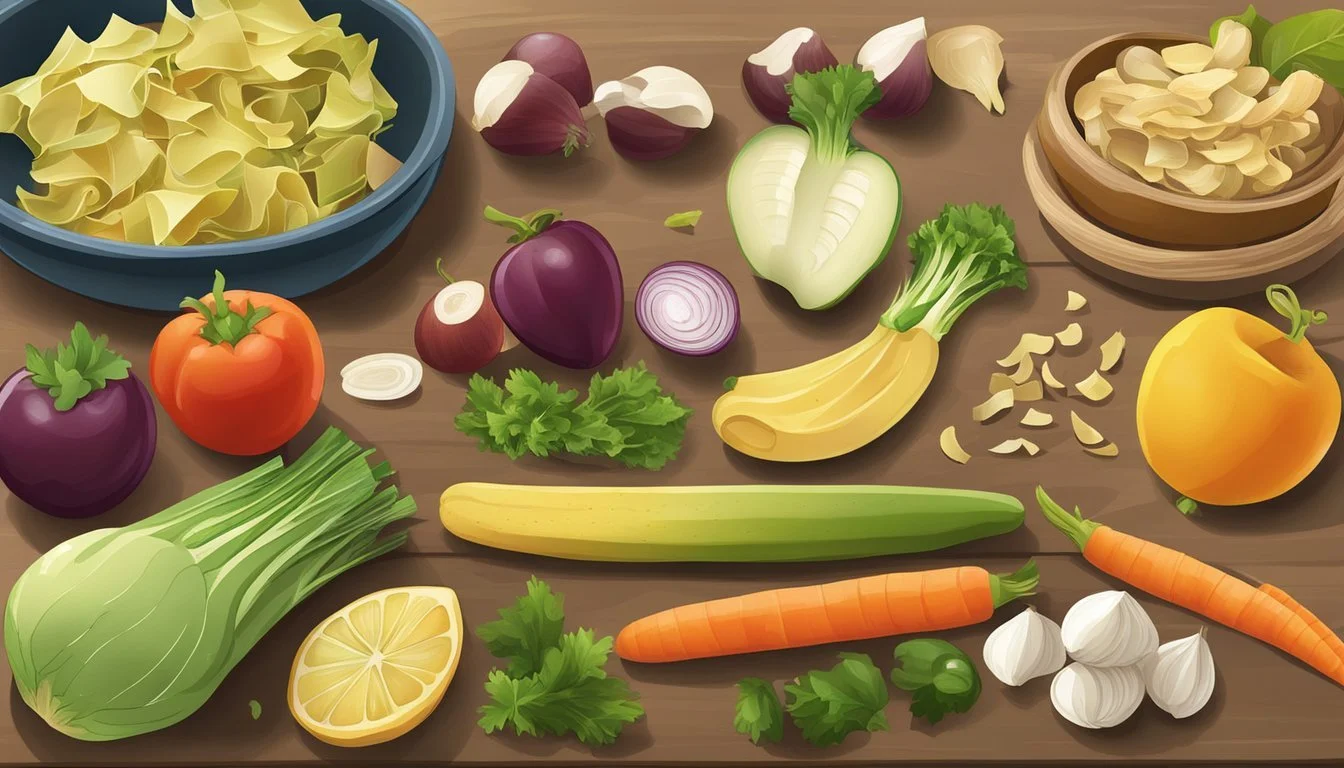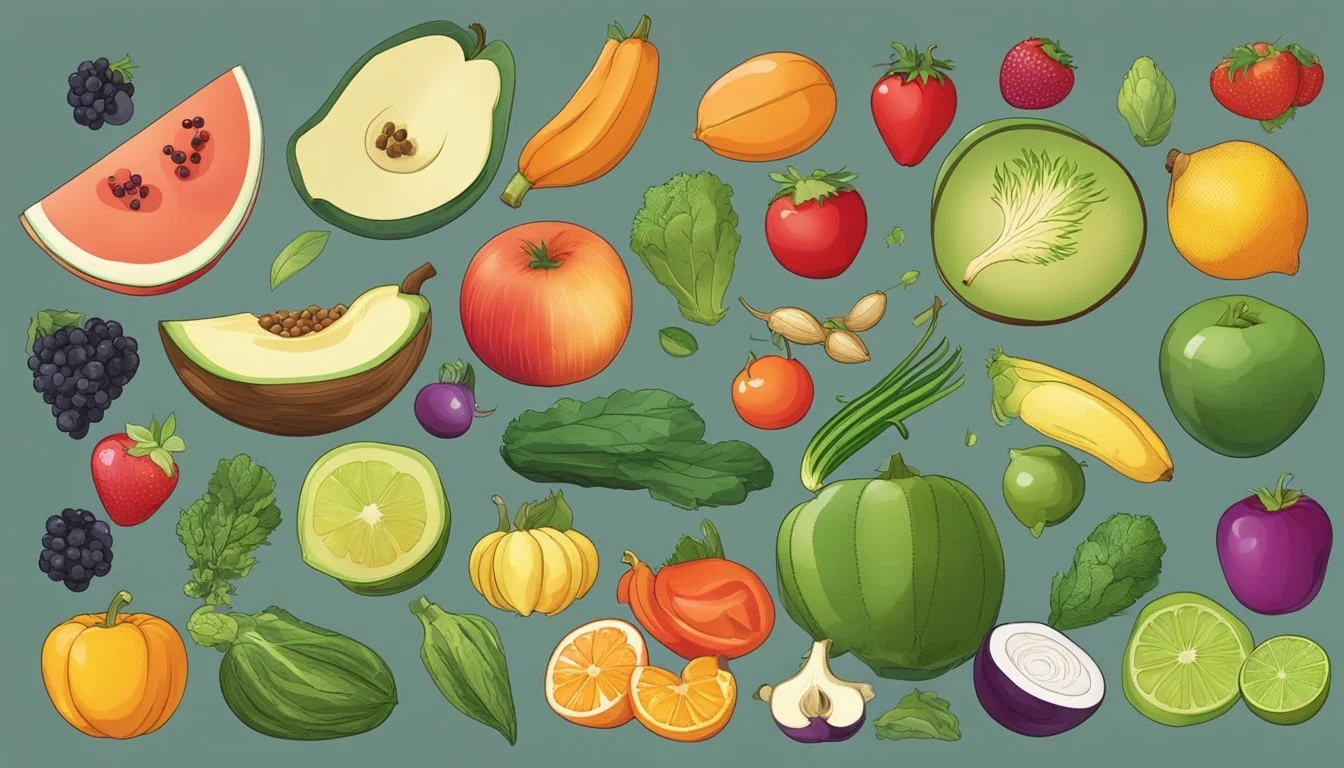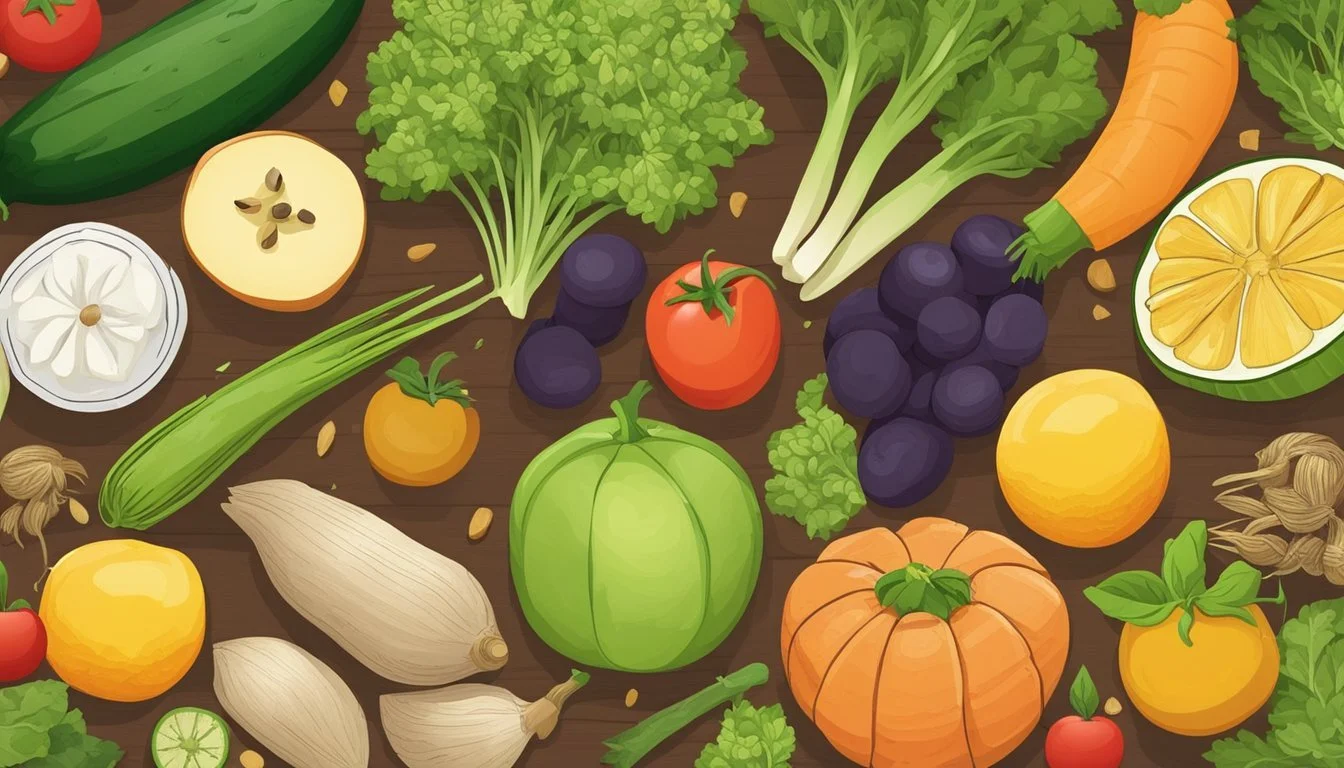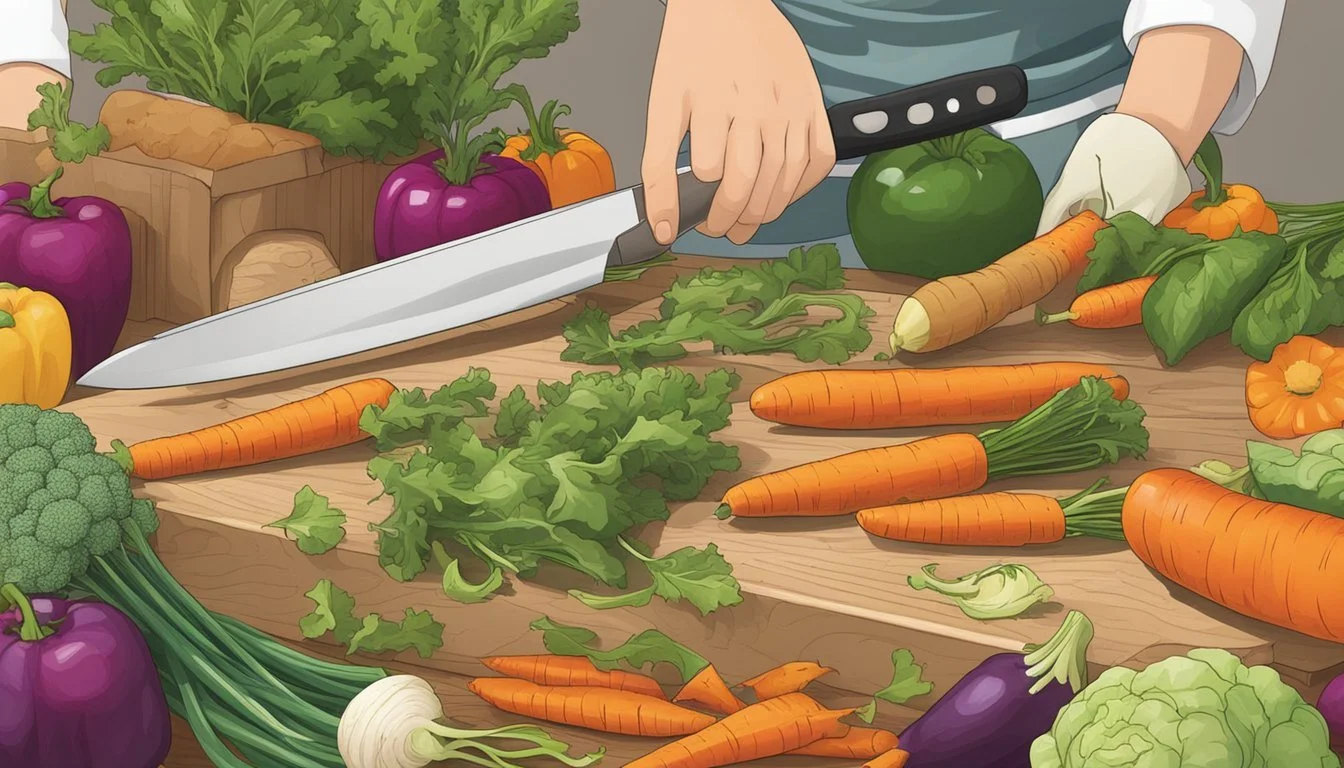How to Efficiently Use All Parts of Vegetables and Fruits
Zero-Waste Cooking Tips
Maximizing the use of every part of fruits (What wine goes well with fruits?) and vegetables not only contributes to a healthy diet but also reduces food waste significantly. When it comes to utilizing produce fully, the key is understanding that many parts often discarded contain valuable nutrients. Peels, stems, and leaves can be packed with vitamins and fiber, and implementing them into meals enhances both nutritional value and flavor.
Individuals can incorporate a variety of techniques to ensure that no part of their fruits and vegetables goes unused. For instance, citrus peels can be zested into dishes or used to create marmalade, while leftover vegetable stems can be repurposed into flavorful stocks or added to stir-fries. Even the leafy tops of vegetables such as carrots (how long do carrots last?)and beets can serve as nutritious additions to salads (What wine goes well with salads?) or as garnishes.
Adopting these practices supports a sustainable lifestyle and elevates the culinary experience. Being mindful of food consumption patterns and exploring creative methods to use produce in its entirety helps contribute to a well-rounded and environmentally friendly approach to eating.
Understanding the Nutritional Value
Vegetables and fruits are integral to a healthy diet, offering a rich array of nutrients. This section underscores the significance of including all parts of these foods in one's diet to leverage their full nutritional potential.
Vitamins and Minerals in Skins and Peels
Skins and peels of vegetables and fruits are often discarded, yet they contain substantial vitamins and minerals. For instance, the skin of potatoes is high in potassium and fiber. Similarly, apple peels are abundant in vitamins like vitamin C and compounds such as antioxidants, which are crucial for combating oxidative stress. Citrus fruit peels contain vitamin C and fiber, along with notable amounts of calcium. It is essential to consume these parts of fruits and vegetables to reap their full benefits.
Potato Skins: Rich in potassium and fiber.
Apple Peels: Abundant in vitamin C and antioxidants.
Citrus Peels: Good source of vitamin C, calcium, and fiber.
Health Benefits of Using Whole Vegetables and Fruits
Integrating whole vegetables and fruits into one's diet promotes numerous health benefits. The fiber from skins and peels contributes to a healthier digestive system and aids in maintaining a stable blood sugar level. The antioxidants found in the peels of many fruits and vegetables, such as beta-carotene in carrot peels, can help reduce the risk of chronic diseases, including certain types of cancer and heart disease. Additionally, the potassium found in the skin of many vegetables helps with managing blood pressure. It’s crucial for consumers to understand the health implications of using whole vegetables and fruits in their diets.
Fiber: Enhances digestion and blood sugar regulation.
Antioxidants: May reduce the risk of cancer and chronic diseases.
Potassium: Helps in managing blood pressure.
Selecting and Storing for Optimal Freshness
Proper selection and storage of fruits and vegetables are crucial steps to ensure that fresh produce maintains its nutritional quality and limits food waste. The methods used can affect energy used in preservation and the efficiency of meal planning and prepping.
Choosing the Best Produce
When selecting vegetables and fruits, shoppers should look for vibrant colors and firm textures, which often indicate freshness and ripeness. For example, ripe tomatoes should give slightly to pressure and cucumbers should be firm and green without any yellowing. Farmer's markets are an excellent source of seasonal produce which typically require shorter storage times, thus conserving refrigerator energy. It's always best to inspect produce for bruises or signs of spoilage to avoid wasted items.
Vegetables: Look for crispness. Avoid anything wilted or with discolored spots.
Fruits: Check the skin. It should be intact without soft patches unless the fruit is naturally soft like a ripe peach.
Storage Tips to Retain Nutrients
For keeping produce fresh, storing them under the right conditions is as important as selecting them carefully. Most vegetables and fruits will benefit from being stored in the refrigerator, but some, like potatoes and onions, last longer in a cool, dark place with some air circulation, which helps retain their nutrients without extra energy being spent on refrigeration.
Vegetables:
Leafy Greens: Store in airtight, moisture-proof bags in the crisper or drawer.
Asparagus: Keep upright in a container with water at the base.
Carrots: Submerge in water in a closed container for longevity.
Fruits:
Citrus Fruits: Store loose in the refrigerator.
Apples/Bananas: Keep at room temperature; refrigerate to prolong life once ripe.
Berries: Keep in their original container in the fridge and wash only before eating to prevent mold.
Note: Sliced fruits like apples and pears should be stored in airtight containers in the refrigerator to delay browning and extend shelf life.
Preparation Techniques
Effective preparation of fruits and vegetables can lead to reduced food waste and enhanced flavor. The following sections outline established methods for washing and prepping, as well as conserving these foods through cutting techniques.
Washing and Prepping Methods
Proper washing is paramount for removing dirt and possible contaminants from the surfaces of fruits and vegetables. Here are specific methods:
Fruits and Vegetables: Rinse thoroughly under running water. Firm-skinned produce like apples can be scrubbed with a clean brush.
Leafy Greens: Submerge in a bowl of cold water, swish to loosen any dirt, then lift out and repeat until water remains clear.
Fresh Herbs: Gently rinse under cold water; dry by laying them between two paper towels.
Drying: After washing, pat dry with a paper towel or use a salad spinner for leafy vegetables to remove excess moisture.
Cutting and Conserving Techniques
Maximizing the use of all parts of produce is key in minimizing food waste. Here are techniques to utilize edible parts that are often discarded:
Vegetable Scraps (e.g., carrot tops, beet greens): Chop finely to add to salads or incorporate into pesto.
Herb Stems: Use in stocks, broths, or finely chop softer stems for adding to dishes.
Broccoli (how long does broccoli last?)Stems and Leaves: Peel stems and slice for stir-fries; sauté leaves as you would spinach.
Citrus Peels: Zest to add flavor to baked goods or candy them for desserts.
Watermelon Rinds: Pickle for a tangy treat or integrate into chutneys.
Herbs: Store by snipping the ends and placing them in water like a bouquet; cover with a plastic bag and refrigerate.
Produce Part Suggestion for Use Citrus Peels Zest for baking; use in marmalades. Broccoli Stems Slice for stir-fries; use leaves as greens. Carrot Tops Add to salads or make into pesto. Beet Greens Saute and serve as a side dish.
Remember to conserve vegetables and fruits by storing them properly after cutting: place them in airtight containers and refrigerate. Some cut fruits (how long do cut fruits last?) like apples can be brushed with lemon juice to prevent browning and extend freshness.
Cooking Strategies
Individuals seeking to minimize waste and maximize flavor can employ numerous strategies when cooking with vegetables and fruits. Utilizing every part, from seeds to stems, can enrich a variety of dishes while providing nutritional benefits.
Innovative Cooking Methods
Vegetable Stems: Creative cooks can transform the often-discarded stems of vegetables into aromatic components for their dishes. For instance, broccoli and cauliflower stems, when peeled and chopped, can be roasted alongside florets to enhance their natural sweetness. Additionally, herb stems are not to be overlooked; they can be finely chopped to make flavorful pestos or incorporated into dressings and marinades.
Fruit Peels and Seeds: Beyond traditional uses, citrus peels can lend a tangy zest to baked goods, or when candied, provide a sweet treat. The peels can also be dehydrated for teas or ground into spice blends. Seeds, like those from pumpkins or squash, can be roasted with oil and spices for a crunchy snack or salad topping.
Making Broths and Soups with Scraps
Vegetable Scraps: When crafting broths and soups, chefs often regard vegetable scraps as culinary gold. Carrot ends, onion peels, and celery leaves can be simmered with water, herbs, and garlic to create a rich and flavorful broth. This base serves as a cornerstone for countless recipes, bringing depth to soups, stews, and sauces.
Fruit Trimmings: Less commonly known, the trimmings and cores of fruits can enrich broths with subtle sweetness and acidity. Apple cores or melon rinds, when simmered, contribute a unique flavor profile to soups and can be blended into juices for additional complexity.
By adopting these strategies, home cooks can extract maximum utility and taste from their produce while contributing to the sustainability of their culinary practices.
Recipes Using the Full Vegetable and Fruit
Utilizing every part of vegetables and fruits not only reduces waste but also can enrich dishes with flavors and textures people often overlook. The following suggestions showcase how leaves, stems, peels, and seeds can play starring roles in meals.
Salads Incorporating Leaves and Stems
Salads often benefit from the inclusion of varied textures and flavors. A classic use of vegetable remnants in salads is incorporating carrot greens and the tender stems of herbs for a punch of flavor. Carrot Top Salad is a prime example, using finely chopped carrot leaves, parsley stems, and a simple vinaigrette to bring out a surprisingly fresh taste. The Hearty Greens Salad takes advantage of kale, chard, or spinach, including their stems, which can be thinly sliced and massaged with dressing to soften them, combined with a selection of roasted seeds and tomatoes for a nutritious crunch.
Carrot Top Salad
Ingredients: Carrot leaves, parsley stems, olive oil, lemon juice, salt, pepper.
Finely chop greens and stems.
Toss with dressing made of olive oil, lemon, salt, and pepper.
Hearty Greens Salad
Ingredients: Kale, chard, or spinach leaves and stems, roasted pumpkin or squash seeds, diced tomatoes, your choice of dressing.
Slice stems thinly, massage with leaves and dressing.
Top with roasted seeds and fresh tomatoes.
Entrees Featuring Peels and Seeds
Entrees can be elevated by the introduction of typically discarded elements like peels and seeds. For example, Tomato Skin Fritters transform tomato peels into a crispy, savory treat, perhaps served with a garlic yogurt dip. Seeds from pumpkins and squash can also be cleaned, seasoned, and roasted to add a nutritious crunch to a variety of dishes. Using these ingredients can add depth to Stuffed Squash Blossoms, where the flowers are filled with a mixture of garlic, cheese, and herbs, then garnished with roasted seeds for an added textural element.
Tomato Skin Fritters
Ingredients: Tomato peels, flour, egg, herbs, salt, pepper, garlic dip.
Combine peels with a batter, fry until golden.
Serve with garlic-infused yogurt sauce.
Stuffed Squash Blossoms
Ingredients: Squash blossoms, garlic, cheese, mixed herbs, roasted squash or pumpkin seeds.
Stuff flowers with a garlic and cheese mixture, bake or fry gently.
Garnish with roasted seeds before serving.
These recipes represent just a few ways chefs and home cooks can creatively incorporate the entirety of vegetables and fruits into delightful and sustainable meals.
Preserving and Extending Usage
Preserving fruits and vegetables is essential for reducing food waste and making the most of every part of the produce. Techniques like pickling and creating jams are not only practical for longevity but also enhance flavors and can be a source of nutrients like vitamin A and fiber.
Pickling and Fermenting for Longer Shelf-life
Pickling is a great way to extend the life of vegetables and fruits, including the skins and seeds that are often discarded. The process involves soaking produce in a solution of vinegar, water, and salt, often with added herbs and spices for flavor. This not only preserves lemons, oranges, and other citrus fruit peels, which are rich in vitamin A and fiber, but also transforms them into tangy, flavorful additions to meals. The key is to ensure the produce is fully submerged in the pickling liquid to prevent spoilage.
Fermenting is another method that not only prolongs the shelf-life but also enhances the nutritional value by promoting probiotic growth. It involves creating an anaerobic environment, typically with salt, where beneficial bacteria can thrive. This process is particularly suited for preserving surplus cabbages into sauerkraut or carrots and radishes with added herbs for more complex flavors.
Creating Jams and Preserves
To capture the essence of berries such as strawberries, blueberries, peaches, and blackberries, making jams and preserves is an effective method. The process involves cooking down the fruit with sugar, which acts as a natural preservative, and then sealing it in sterilized containers. Here's a simple guide to follow:
Prepare the fruit: Wash and cut the fruit into even-sized pieces, removing any blemishes. Keep the skins on fruits like peaches and blackberries for added fiber and nutrients.
Cook with sugar: Combine the fruit with sugar in a heavy-bottomed pot and heat until the sugar dissolves and the fruit releases its juices. The natural pectin in fruits like blueberries and strawberries will help the jam set.
Sterilize and seal: Pour the hot jam into sterilized jars, seal them while they're still hot, and allow them to cool. This creates a vacuum seal that preserves the jam for up to a year when stored in a cool, dark place.
Reducing Waste
Reducing food waste not only conserves resources and addresses hunger, but also turns potential waste into valuable food resources. Here are effective methods to achieve this goal.
Composting Vegetable and Fruit Scraps
Composting is an excellent method of recycling vegetable and fruit scraps. Composting converts organic waste into nutrient-rich soil, beneficial for gardening and landscaping. It's a straightforward process:
Collect all vegetable and fruit scraps, including skins and seeds.
Place these scraps into a compost bin, alternating with layers of 'browns' like dry leaves or cardboard.
Regularly turn the compost to aid in decomposition.
Once mature, use the compost to enhance soil quality, completing the resource cycle.
By composting, individuals not only reduce waste but also enrich the soil without the need for chemical fertilizers, promoting sustainable living.
Utilizing Leftovers and Creating Snacks
Breakfast: Leftover vegetable scraps like the ends of zucchini or carrot peels can be incorporated into omelets or smoothies, adding nutrition to the first meal of the day.
Snacks: Crispy snacks can be made from peels, such as:
Baked Potato Skins: Coat clean potato skins with olive oil, sprinkle with salt and preferred spices, and bake until crisp.
Fruit Chips: Thinly slice fruits like apples, sprinkle with cinnamon, and bake for a sweet treat.
These methods of using leftovers and creating snacks not only minimize food waste but also provide healthy, cost-effective snacking options.
Health and Dietary Considerations
In pursuing a healthy diet, one's focus should often be on the incorporation of a wide variety of produce and a balance of macronutrients. The emphasis should be on the nutrient-rich parts of fruits and vegetables that are commonly discarded but are beneficial to health.
Incorporating More Produce into Meals
One can enhance their diet by creatively using leafy greens like kale and spinach in a range of dishes from smoothies to salads. These greens are high in fiber and antioxidants, which are essential components for a well-functioning digestive system and for combating oxidative stress, respectively. For example:
Breakfast: Add spinach to omelets or mix kale into smoothies.
Lunch: Make salads that combine a variety of leafy greens for a nutrient-dense meal.
Dinner: Incorporate chopped kale or spinach into soups or stews.
Balancing Macronutrients with a Variety of Produce
A variety in produce, which includes beans, peas, carrots, and sweet potatoes, guarantees a coverage of essential macronutrients like carbohydrates, proteins, and healthy fats. These whole foods provide a spectrum of nutrients while promoting satiety and balanced energy. Considerations include:
Carbohydrates: Sweet potatoes and carrots offer complex carbohydrates for sustained energy.
Proteins: Beans and peas are excellent sources of plant-based proteins.
Fiber Content: The inclusion of various vegetables in each meal ups the fiber content which is vital for digestive health.
By focusing on the full usage of fruits and vegetables and understanding their respective health benefits, individuals can make informed choices that contribute significantly to their overall well-being.
Conclusion
In embracing a sustainable approach to food consumption, individuals can make significant strides towards reducing waste and maximizing the nutritional value of their meals. By incorporating every part of fruits and vegetables, one not only creates an array of flavorful dishes but also contributes to an eco-friendlier lifestyle.
Citrus peels, often discarded, serve as excellent ingredients for marmalades or zest in sweet and savory food items, while also imparting unique flavors to cocktails. Incorporating a variety of fruit and vegetable servings—more than the commonly suggested five a day—can potentially yield greater health benefits, including a reduced risk of chronic diseases.
Vegetable scraps, such as broccoli stems or carrot tops, can be transformed into nutritious broths or pestos. With creativity, one can reduce food waste, save money, and enrich their diet.
To summarize, eating a diet rich in fruits and vegetables is unequivocally beneficial for health. It is imperative that people make the most of these resources, tactfully utilizing every part to its fullest potential. Here are practical takeaways:
Citrus Peels: Zest for flavor, marmalade for spreads, or garnish in drinks.
Vegetable Tops: Stems into broths, leaves into salads or pestos.
Variety and Quantity: Aim for 7+ servings of fruits and vegetables daily.
Eco-Friendly: Embrace sustainability through mindful use and less waste.
The evidence is clear: a diet abundant in fruits and vegetables, where all parts are used, not only benefits personal health but also the environment. Through thoughtful consumption, everyone can contribute to a more sustainable and healthful world.

